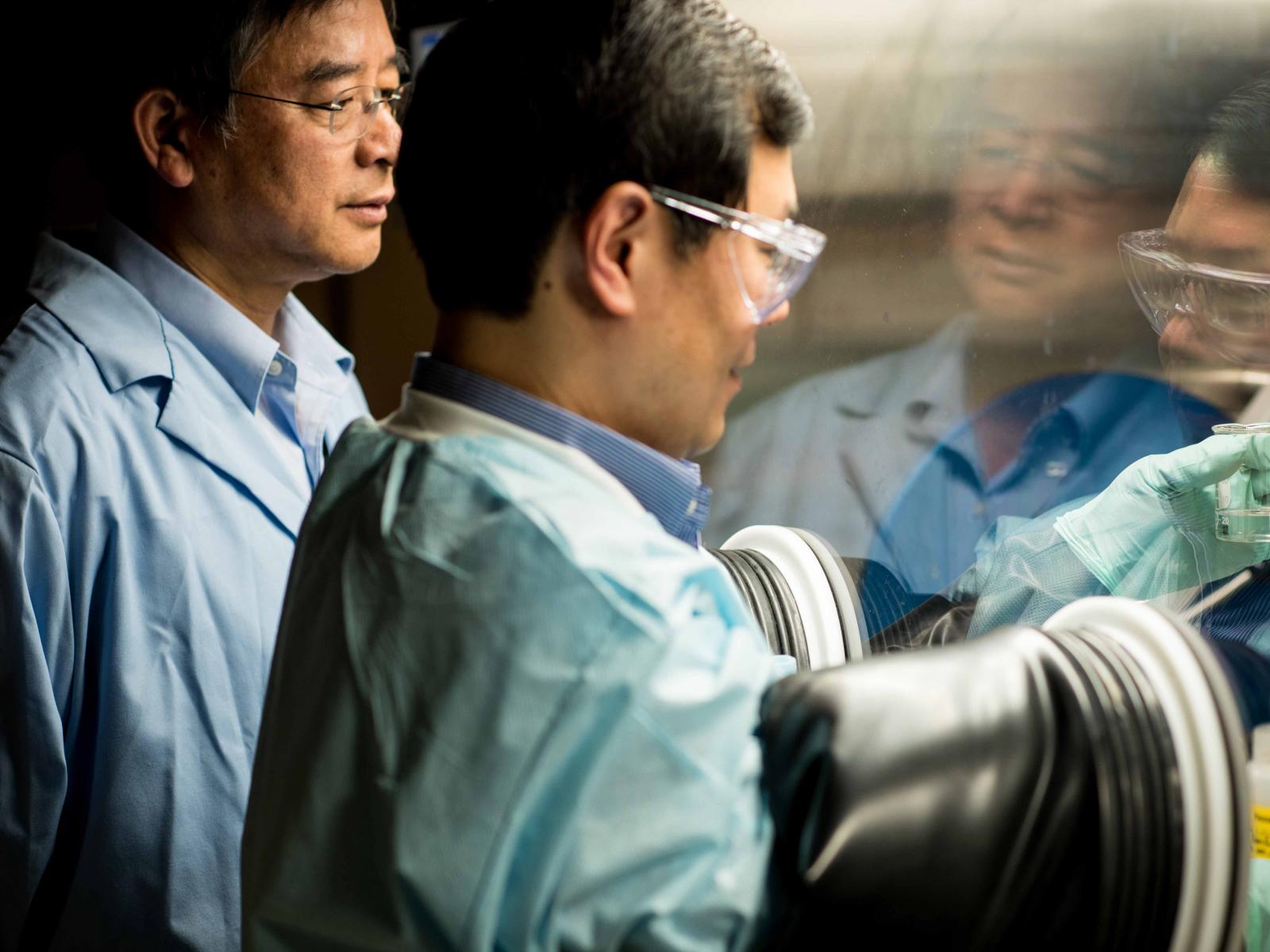Applied Materials Science & Engineering

Our capability in applied materials science and engineering emphasizes materials synthesis, manufacturing, and device fabrication and testing—which are scaled up and transferred to industry. This capability has been central to PNNL’s significant contributions to the development of automobile catalysts, superplastic forming, biofuels, better batteries, innovative welding processes, and many more clean energy technologies.
Strengths include materials characterization; materials theory, simulation, design, nucleation, and synthesis; materials structural and chemical modification; controlling defects in material properties; and materials performance in hostile environments, including the effects of radiation and corrosion. We draw on PNNL’s capabilities in chemical, molecular, biological, nuclear, and subsurface science, as well as our ability to engineer enabling nanostructured and self-assembled materials, tailored thin films, ceramics, glasses, alloys, composites, and biomolecular materials. We are developing advanced glass formulations, key process control models, and tactical processing strategies to support high- and low-level waste vitrification facilities.
We apply our core capability to conduct research in several key technologies. These areas include energy storage materials, solid-oxide fuel cells, solid-state lighting, absorption cooling, lightweight alloys, magnetic materials, organic electronic materials, and radiation effects on materials. Other research areas include the synthesis and processing of bulk nanostructured materials, high-surface-area materials, catalysts, and nanoporous materials for energy applications. PNNL has high- and low-dose radiological facilities, including the Radiochemical Processing Laboratory, Physical Sciences Facility, Materials Science and Technology Building, and laboratories for thin-film material synthesis and deposition.
The applied materials science and engineering capability forms the basis for several sponsor-funded programs. These programs include materials synthesis; radiation effects in materials; multiscale behavior of structural materials; and modeling, design, and synthesis of materials and chemicals that bridge the mesoscale. Additional programs are fuel cells and energy storage; electric and lightweight vehicle technology; nuclear reactor safety assessment, regulatory criteria, and life extension; and legacy waste forms.